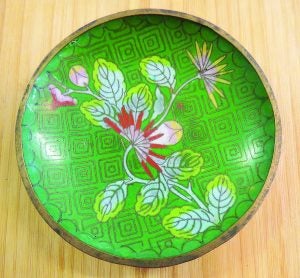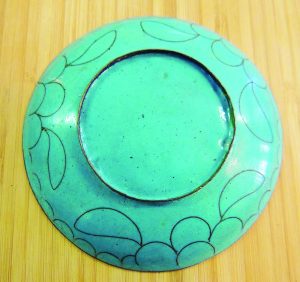Personal effects: Cloisonne been around in some form or other for thousands of years
Published 6:15 pm Friday, March 13, 2020
BY JERRY SAMPSON
Community columnist
Question: Hi Jerry, I’ve picked up several of these Chinese enamel pieces. What are they called and are they worth much. I have some that are marked “Made in China” and some are blank. Any help you can give this collector is always appreciated. Thanks.
 Answer: You have a piece of Chinese cloisonne. Cloisonne is derived from the French and means wall or cell. It’s been around in some form or other for thousands of years. These little brass walls that are soldered on to a metal base are filled with powdered glass enamel and then are fired under high temperatures. Then comes a series of polishing and cutting back to reveal the pattern underneath. Works can range from very crude and sloppy, ie: modern tourist pieces. Pieces like yours were made for trade to other countries and are often of nice quality with good design and colors. Then there are the masterpieces that are museum or palace quality. Most folks won’t encounter these examples. There are many other types of enamel work that many other countries used too. We’ll save that for another time and article.
Answer: You have a piece of Chinese cloisonne. Cloisonne is derived from the French and means wall or cell. It’s been around in some form or other for thousands of years. These little brass walls that are soldered on to a metal base are filled with powdered glass enamel and then are fired under high temperatures. Then comes a series of polishing and cutting back to reveal the pattern underneath. Works can range from very crude and sloppy, ie: modern tourist pieces. Pieces like yours were made for trade to other countries and are often of nice quality with good design and colors. Then there are the masterpieces that are museum or palace quality. Most folks won’t encounter these examples. There are many other types of enamel work that many other countries used too. We’ll save that for another time and article.
Now, on to the dating. When you see a blank piece that is going to tell us that it dates from before the William McKinley Tariff Act of 1890. Items that are marked just CHINA are going to be dating from 1891 – 1921. Items that are marked, “Made in China”, are from the 1920s to the modern times. You might also see “Made the The People Republic of China” and this is going to date to 1949, and again, to our modern times.
 So, being your little tray is unmarked, that means it dates prior to 1891. This little tray could have had a multitude of uses. You, for some reason don’t see a lot of green back grounds. And that floating square design is also unusual. I think in a retail store it might have a price tag of about $10 on it. Thanks for a great question.
So, being your little tray is unmarked, that means it dates prior to 1891. This little tray could have had a multitude of uses. You, for some reason don’t see a lot of green back grounds. And that floating square design is also unusual. I think in a retail store it might have a price tag of about $10 on it. Thanks for a great question.





